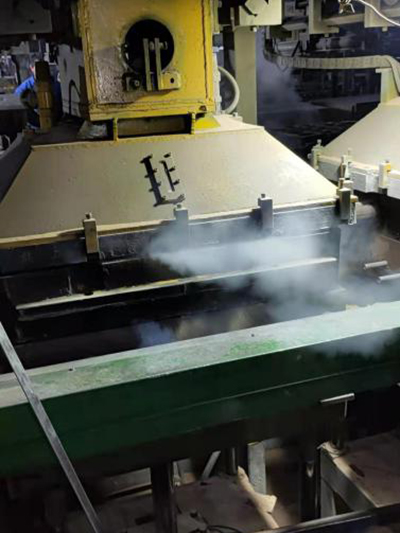Understanding Foundry Sand Composition, Properties, and Applications
Foundry sand is a key material in metal casting processes, significantly impacting the quality of the final product. It plays a crucial role in providing a suitable medium for the formation of molds and cores, thereby ensuring the efficient shaping of molten metal. This article delves into the composition, properties, environmental considerations, and applications of foundry sand.
Composition of Foundry Sand
Foundry sand is predominantly composed of silica (SiO2), which is the primary component responsible for its desirable properties. The sand usually comes from natural sources, such as riverbeds and dunes, or is manufactured through the crushing of quartz into finer particles. Other minerals, such as clay, silt, and various additives, may be present to enhance its performance. The grain size, shape, and distribution of these particles are critical for achieving optimal mold strength, permeability, and surface finish.
Properties of Foundry Sand
One of the defining characteristics of foundry sand is its high refractoriness, which allows it to withstand the extreme temperatures involved in metal casting without deforming. Its thermal conductivity ensures even heat distribution, minimizing the risk of defects such as warping or cracking in the final cast product. Another important property is permeability, which allows gases generated during the pouring process to escape, preventing blowholes and inclusions in the cast metal.
Foundry sand also exhibits excellent mold strength, allowing it to maintain its shape under the pressure of molten metal. This strength can be influenced by the moisture content and the type and amount of binders used during the molding process. Additionally, factors such as particle size distribution and the addition of specific additives can further tailor the properties of the sand for particular casting applications.
Environmental Considerations
foundry sand pdf

Despite its usefulness, foundry sand raises environmental concerns, especially when it comes to disposal. Traditionally, spent foundry sand, which is generated after the casting process, was often sent to landfills. However, growing awareness of sustainability has led to new practices aimed at recycling and reusing foundry sand.
With proper processing, spent foundry sand can be recycled for various applications, including in civil engineering projects, as a construction material, or as a soil amendment. This not only reduces waste but also conserves natural resources. Regulatory guidelines are increasingly being established to manage the use and disposal of foundry sand sustainably, ensuring that any heavy metals or contaminants are safely handled and do not pose risks to the environment.
Applications of Foundry Sand
Foundry sand is primarily utilized in the metal casting industry, where it is essential for producing a wide variety of products, ranging from automotive components to intricate machinery parts. The versatility of foundry sand allows it to be used in different casting methods, including sand casting, shell casting, and investment casting.
In addition to its core use in metal casting, foundry sand has found applications beyond the foundry environment. Its physical properties make it suitable for use in sports fields, as it provides excellent drainage and resilience for turf and athletic tracks. Moreover, foundry sand is increasingly being incorporated into concrete and asphalt mixtures, enhancing their mechanical properties and durability.
Conclusion
Foundry sand is an indispensable material in the metal casting industry, offering unique properties that contribute to the quality and efficiency of casting processes. As the industry moves toward more sustainable practices, the recycling and reuse of spent foundry sand present exciting opportunities for minimizing environmental impact while optimizing production. Understanding the composition and properties of foundry sand, alongside its broad range of applications, is essential for harnessing its full potential in modern manufacturing and construction. Through innovation and responsible practices, foundry sand will continue to play a vital role in shaping a range of products and infrastructures across various sectors.
Post time:10月 . 16, 2024 22:52
Next:Innovative Techniques in Lost Foam Casting for Precision Metal Fabrication
